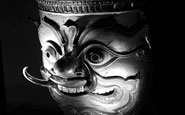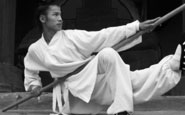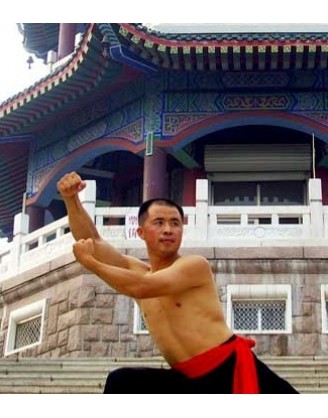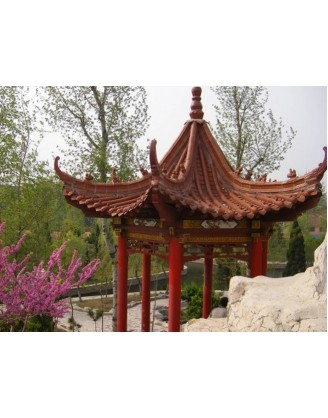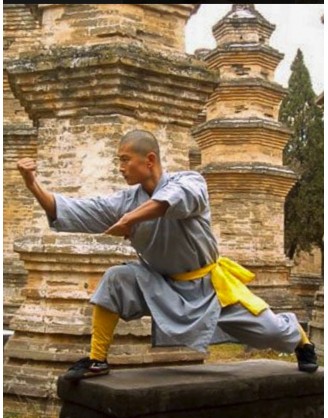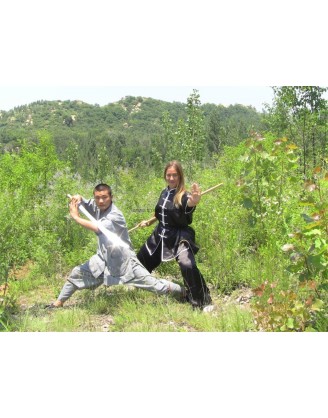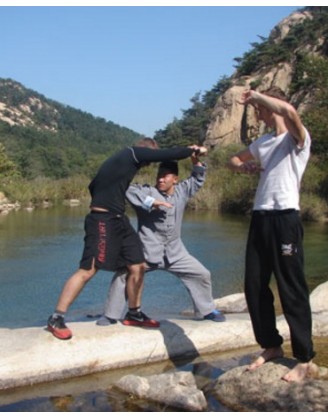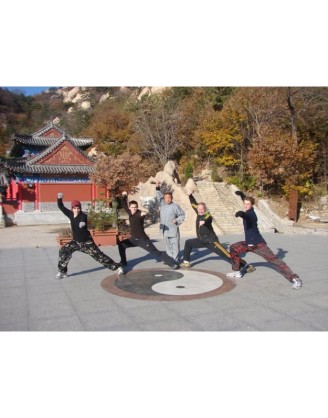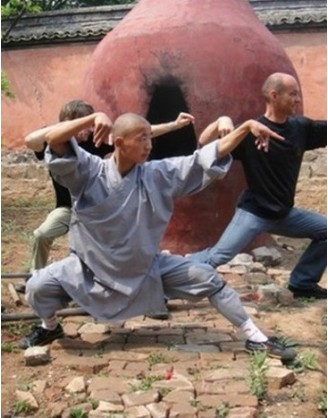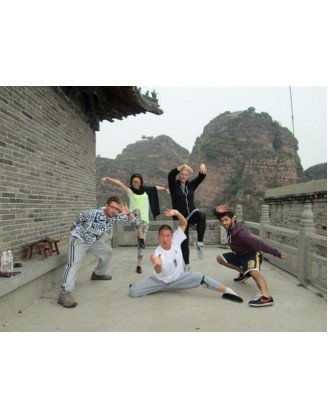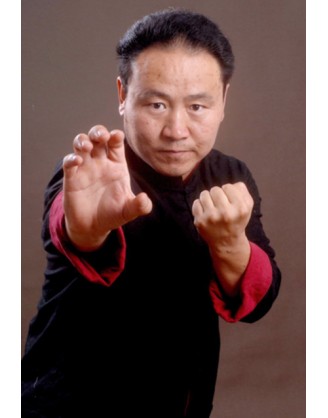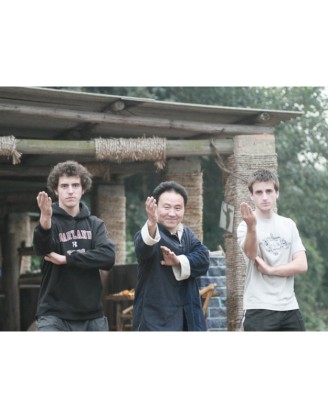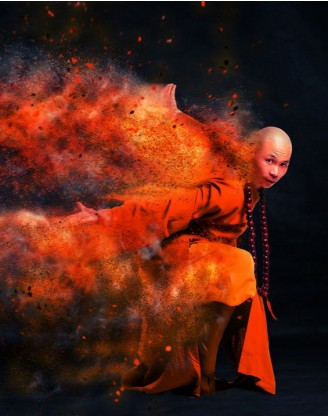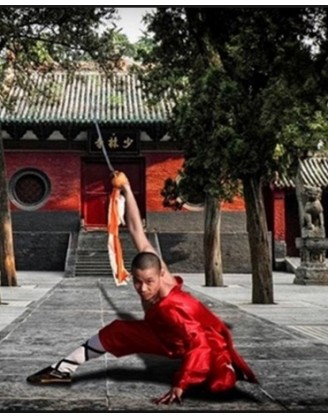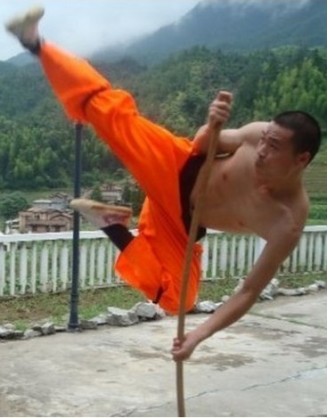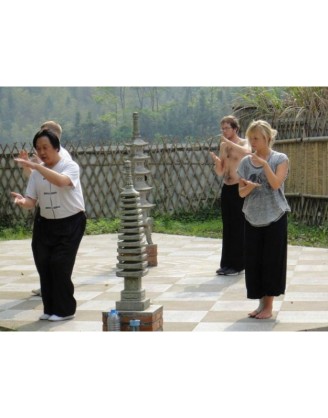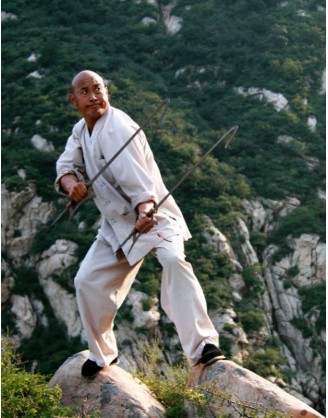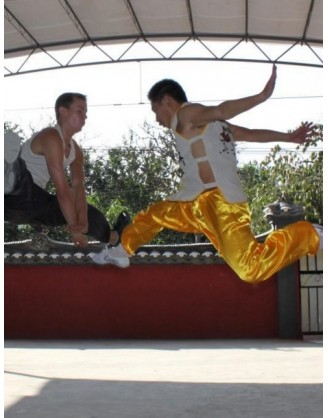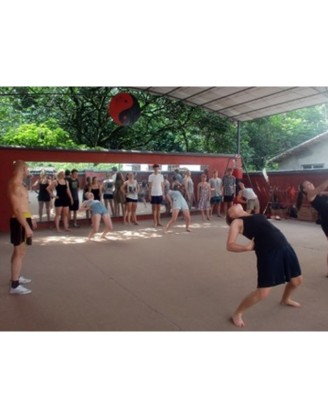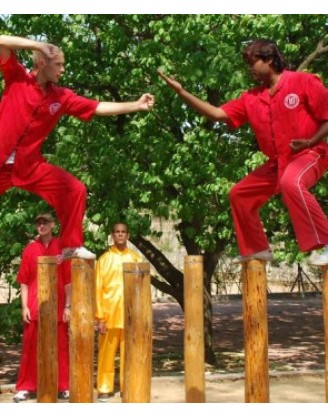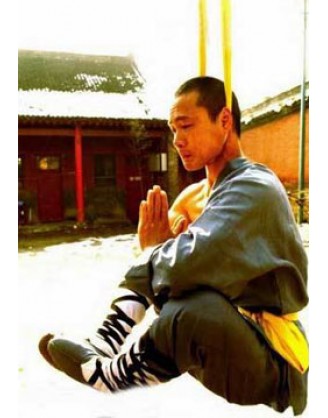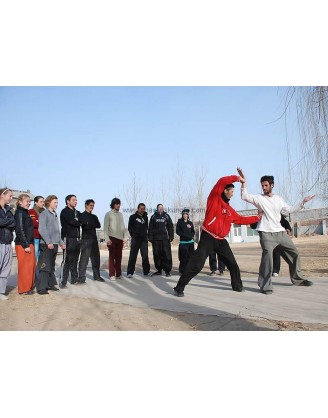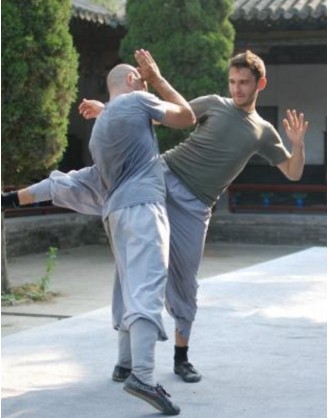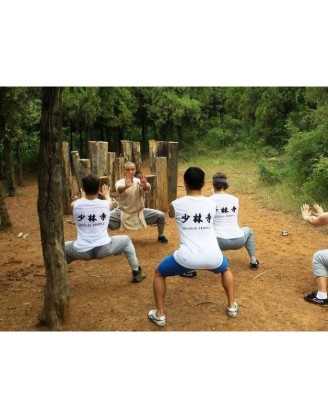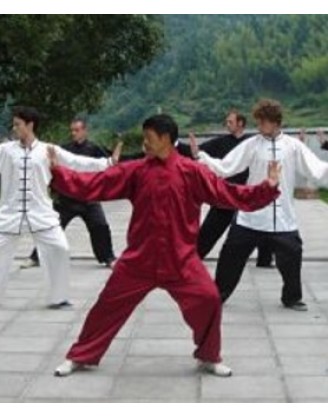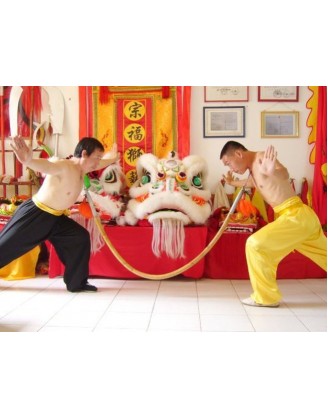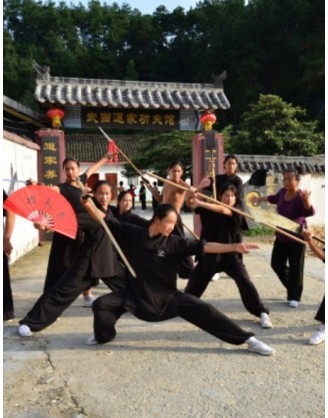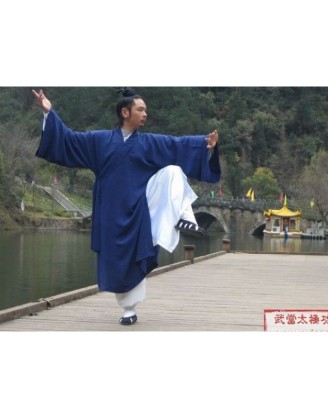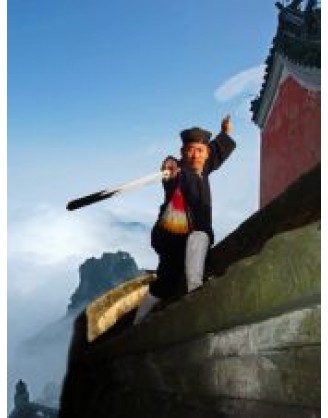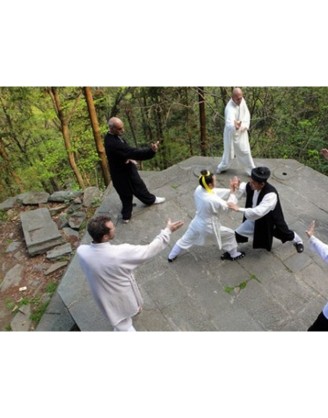Kung Fu
Refine Search

Chinese Kung Fu (Martial Arts or as popularly referred to as Gongfu or Wushu) is a series of fighting styles which has developed over a long historical period in China. Nowadays, it is regarded as a traditional sport gaining more and more popularity and even stands as a representative for Chinese culture. Styles including Shaolin, Tai Chi and Qigong have many followers worldwide. Some westerners think that all Chinese people are Kung Fu masters. That’s not true, but this traditional heritage has its unique existence in modern times and left much influence on the locals’ lifestyle.
Martial Arts Tourists
Kung Fu in China
Although being fighting styles, Kung Fu advocates virtue and peace, not aggression or violence. This has been the common value upheld by martial artists from generation to generation. With a number of movement sets, boxing styles, weapon skills and some fighting stunts, Kung Fu keeps its original function of self-defense. Now its value in body-building and fitness is also highly appreciated.
Classification
Over the centuries of development in China, Kung Fu has become a large system containing various schools or sects. It is recorded that there are over 300 distinct types of boxing existing around the country. The styles in northern and southern China are quite different. Therefore it is hard to be simply classified
Some of the schools are classified by geographical locations, for example, the Southern Fist (Nanquan) prevailing in south China, and Shaolin School based at Shaolin Temple in Henan Province. Some are named after the creator and master, like the Chen Style Tai Chi and Yang Style Tai Chi. Some are identified by different training methods, such as the Internal Boxing Arts (Neijiaquan) that concentrate on the manipulation of the inner breath and circulation of the body, and the External Boxing Arts (Waijiaquan) concentrating on improving the muscles and the limbs.
The most outstanding and influential schools are listed as follows:
Shaolin:
Originated in the Shaolin Temple in Henan, this is considered the premier style in China and is widely spread all over the world. Both of its physical exercise and mental training are based upon Buddhist philosophy. The Shaolin Boxing, Southern Fist (Nanquan), Northern Legs (Beitui) and Wing Chun are the representatives of this school.
Wudang:
This sect has almost the same fame as the Shaolin. Based at the Mt. Wudang in Hubei Province, it is developed under the guidance of Taoist theories. T’ai Chi Ch’uan, Form / Intention Boxing (Xingyiquan), Eight-Diagram Palm (Baguazhang) are essentials of Wudang.
Emei:
Taking Mt. Emei in Sichuan Province as its camp, this sect is moderate and blends the merits of Shaolin and Wudang. Many sub-branches derive under this sect, including Qingcheng, Tiefo, Qingniu, Dianyi, Huanglin, etc.
Tai Chi:
This is a comparatively slow and elegant style originated from the combination of Taoism, dialectic ideology, traditional medicine and physical exercise. It features attack by accumulating the strength, conquering the rigidity with the flexility, and beating action by inaction.
Xingyiquan Intention Boxing:
It is a representative of Internal Boxing Arts characterized by its straightforward fist and quick attack which are well suitable for fighting against the enemy. Its boxing routines include Five Elements Boxing, Twelve Animals Boxing and so on.
Eight-Diagram Palm (Baguazhang): Created by the master Dong Haichuan, the Eight-Diagram Palm features continuous changes in palm styles and steady steps in circle. Many sub-sects derive from this school.
Southern Fist (Nanquan): This traditional school prevailed over 400 years in south China. Centered in Guangdong and Fujian Provinces, it features short and tight movements, various skills, steady steps and vigorous attacks. The grand master Wong Fei-hung is good at the Southern Fist.
Qigong: It is not only a school of martial arts but also a physical and mental exercise method, which is beneficial to health and body-building. There are mainly two types - Dynamic Qigong practiced by specific body movements, and Static Qigong practiced by adjusting the breath and mind.
Learn Kung Fu in China
In the recent years, learning Chinese martial arts has been more and more popular among people of different ages and nationalities. Therefore, many Kungfu training centers or clubs have been established. A strong will and persistence is the precondition for learning. One should follow a master or join a training school to learn systematically. The basic skills of legs, waist, shoulders and stance training need to be practiced daily. Employing the solid foundation of the basic skills, one can choose from the various sects to learn specific routines of boxing, kicking and weapon skills, to improve the combat ability.
Being regarded as an important part of Chinese ancient culture, Chinese martial arts has attracted more and more foreigners. For foreigners who want to learn Chinese martial arts in China, Chinese martial arts schools can be the best choice. Wanting to know the best Chinese martial arts schools in China?
1 Songshan Shaolin Martial Arts Academy
Established in early 1980, it has been very popular among foreign learners for its authentic Chinese martial arts courses and perfect study environment. Sponsored by the Shaolin Temple, it offers the best and perfect courses for students from all over the world.
2 Henan Dengfeng Shaolin Epo Wushu College
Founded in 1977, it is one of the oldest Chinese martial arts schools in China. All the courses have been based on the needs of the students and it also offers various services for its students.
3 Beijing Shaolin Wushu School
As a key martial arts school in Beijing, it was established in 1991.After several years’ development, it own four branches at present. Offering courses of different level, it has been the best choice for people who want to learn Chinese martial arts in Beijing.
4 Haideng Art and Kungfu School
Founded in 1988 by Wang Quanyi, a famous martial educationalist who inherited from Shaolin Haideng Master, it covers a land area of 200 Chinese acres with more than 10 million RMB invested, which is a great guarantee for its quality of facilities.
5 Song Shan Shaolin Temple Harbin Wushu School
It is regarded as one of the best Chinese martial arts schools in the Northeast of China. Founded in 1994, it is a professional martial school managed and instructed by the masters from Shaolin Temple.
6 Siping City Shao Lin Martial Arts Academy
It offers first-class courses of shaolin kungfu for students from all over the world. Until now it has received about 2,000 foreign learners from all over the world. Founded in 1995, it has developed itself into a professional martial arts school.
7 Shanghai Qingpu Martial Arts Institute
Having its establishment in 1998, it boasts strong teaching team and well-known martial arts coaches in China. It is also equipped with advanced and complete teaching facilities and board equipment.
8 Chenjiagou Martial Arts Academy
For those foreign learners who want to learn Tai Chi chuan, it is the best place, and it has gained great achievement in teaching activities of Tai Chi. And this schools is also the first classic provincial academic institution in China.
9 Shaolin Small Dragon Martial Arts Institute
With about 5,000 students studying in it, it has cultivated a large number of outstanding martial arts talent, and world-class champion, national champions in years.
10 South Shaolin Martial Arts School
After more than 20 years’ development, it has been a famous martial arts school in Fujian province and China. With the help of various famous people and association, it gains great achievement in teaching.
Kung Fu - Gung Fu - Gongfu
Rung fu (often romanized as gung fu or gongfu) is a Cantonese phrase meaning, depending on context and the connotations an interpreter applies to the term, “hard work,” “human effort,” “exertion,” or “skill”; especially in the context of the martial arts, gong carries the meaning of “inner power.” In contemporary Western usage, kung fu has been used as a generic term for Chinese martial arts ranging from what have been labeled the “soft” or “internal” arts of taijiquan (tai chi ch’uan), baguazhang (pa kua ch’uan), and xingyiquan (hsing i ch’uan) to the so-called hard or external arts of Northern and Southern Shaolin. The term kung fu has been associated particularly with those martial systems that tradition claims are descended from the Shaolin Temple arts. In addition, the label kung fu tends to be more strongly associated, outside China at least, with the forms of Chinese martial arts that are presumed to emphasize striking over grappling techniques. According to some sources, the term originated as an admonition to practice diligently and was associated, in Hong Kong and Taiwan, with wugong (fighting skill).
Dai'id Carradine practicing tire art of kung fu on a studio lot in Hollywood. (Hulton Archive)
The use and spread of the term kung fu have been attributed to the popularity of Hong Kong motion picture and television star Bruce Lee and the television series of the early 1970s, Kung Yu, starring David Carradine. Kung fu as a generic term for Chinese martial arts appeared at least three years before Lee’s initial appearance on U.S. television in 1966, as the character “Kato” in The Green Hornet series, after the term was used by Ed Parker in his Secrets of Chinese Karate. In this volume, Parker gave what he called Chinese Karate the name kung fu, or chuan (pinyin quan; fist) shu (art). This latter phrase, despite a similarity of sound in its English rendering, is unrelated to the term kung fu and more closely connected with the term quanfa (ch’uan' fa), "fist way,” which is fighting with the bare hand or empty hand. Another term for the Chinese martial arts, Chinese boxing, likely derives from translation of the term quanfa.
In the 1920s, the term adopted by the KMT (Kuomintang; pinyin Guomindang, or GMD), the National People’s Party, for Chinese martini arts was guoshu (national art). With the establishment of the People’s Republic of China in the 1950s, the Mandarin term wushu (war art/tech-nique/method) was adopted for the fighting arts of China and has gained Two young women demonstrate Chinese boxing (popularly known as hung fu) in a public square in San Francisco, February 9, 1979. (Hulton-Deutsch Collection/Corbis)
general acceptance, particularly in academic circles. Nevertheless, kung fu continues to be used in Hong Kong and other areas outside mainland China, as well as internationally in the popular media.


